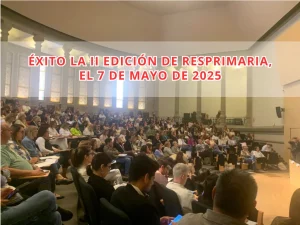Phenotypes, Etiotypes, and Endotypes of Exacerbations of Chronic Obstructive Pulmonary Disease

About Exacerbations of COPD (ECOPD)
Chronic Obstructive Pulmonary Disease is a major health problem with a high prevalence, a rising incidence, and substantial morbidity and mortality. Its course is punctuated by acute episodes of increased respiratory symptoms, termed exacerbations of COPD (ECOPD). ECOPD are important events in the natural history of the disease, as they are associated with lung function decline and prolonged negative effects on quality of life.
"Identify distinct etioendophenotypes, incorporating traits of the acute event and of patients who experience recurrent events, to develop novel and targeted therapies".
The present-day therapy for ECOPD with short courses of antibiotics and steroids and escalation of bronchodilators has resulted in only modest improvements in outcomes. Recent data indicate that ECOPD are heterogeneous, raising the need to identify distinct etioendophenotypes, incorporating traits of the acute event and of patients who experience recurrent events, to develop novel and targeted therapies.
Conclusion: Advancing treatment strategies for exacerbations of COPD through etioendophenotype identification
These characterizations can provide a complete clinical picture, the severity of which will dictate acute pharmacological treatment, and may also indicate whether a change in maintenance therapy is needed to reduce the risk of future exacerbations. In this review we discuss the latest knowledge of ECOPD types on the basis of clinical presentation, etiology, natural history, frequency, severity, and biomarkers in an attempt to characterize these events.
Authors
Surya P. Bhatt, Alvar Agusti, Mona Bafadhel, Stephanie A. Christenson, Jessica Bon, Gavin C. Donaldson, Don D. Sin, Jadwiga A. Wedzicha, and Fernando J. Martinez
Read more details at
Noticias relacionadas

Metabolomic Plasma Profile of Chronic Obstructive Pulmonary Disease Patients
This study identifies a metabolic signature of COPD patients, involving fatty acids, amino acid and carbohydrate metabolites, using LC-MS plasma profiling.

Éxito en la segunda edición de RESPrimaria en la UB
La Segunda Edición de RESPrimaria reunió a 350 profesionales en la UB con sesiones clínicas sobre EPOC, IA, nutrición, salud mental y ventilación no invasiva.

Alteraciones espirométricas y sus factores de riesgo en la población joven ambulatoria
Un estudio reciente en Osona (Cataluña) refleja que 20,7% de jóvenes presenta alteraciones espirométricas. También revela síntomas y factores de riesgo en la población joven ambulatoria.
Artículos
COPD
- 759578·Alberto Papi et Al.-Relationships between symptoms and lung function in asthma and/or chronic obstructive pulmonary disease in a real-life setting: the NOVEL observational longiTudinal studY
- 759785·Richard Beasley et Al – Prevalence, Diagnostic Utility and Associated Characteristics of Bronchodilator Responsiveness
- 759788·Alvar Agustí, Rod Hughes, Eleni Rapsomaki, Barry Make, Ricardo Del Olmo, Alberto Papi, David Price, Laura Benton, Stefan Franzen, Jørgen Vestbo, Hana Mullerova – The many faces of COPD in real life: a longitudinal analysis of the NOVELTY cohort
- 759883·Alberto Papi, Rosa Faner, Ian Pavord, Federico Baraldi, Vanessa M McDonald, Mike Thomas, Marc Miravitlles, Nicholas Roche, Alvar Agustí. – From treatable traits to GETomics in airway disease: moving towards clinical practice
- 768799·Surya P Bhatt Richard Casaburi Alvar Agusti et Al. Chronic obstructive pulmonary disease: hiding in plain sight, a Statement from the COPD Foundation Medical and Scientific Advisory Committee
Ensayos
- 769685·Nuria Olvera et Al.- Lung Tissue Multi-Layer Network Analysis Uncovers the Molecular Heterogeneity of COPD
- 779885·Ana Rodrigo-T,Jordi Giner,Lidia Perea,Jose Luis Merino,Núria Albacar,Belén Solarat,Diego Castillo,Rosa Faner,Alvar Agustí,Oriol Sibila. Predicting Early Hospital Readmissions in COPD Patients Using an Electronic Nose | Archivos de Bronconeumología
- 788772·Alvar Agustí et al. Add-on inhaled budesonide in the treatment of hospitalised patients with COVID-19: a randomised clinical trial
Imagen obtenida en Canva Pro.
